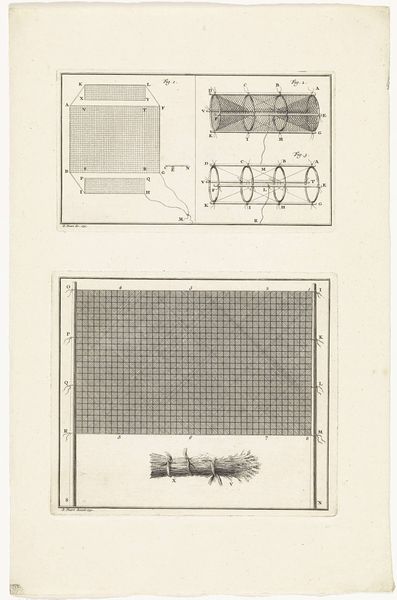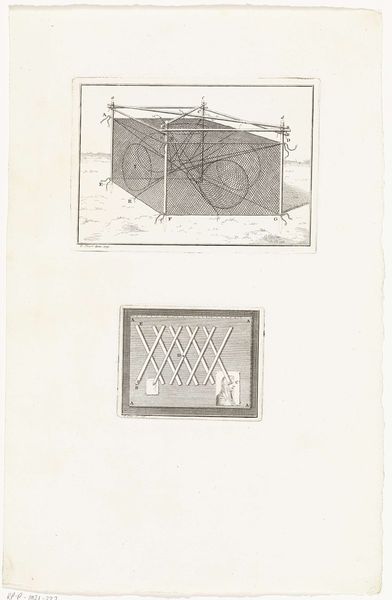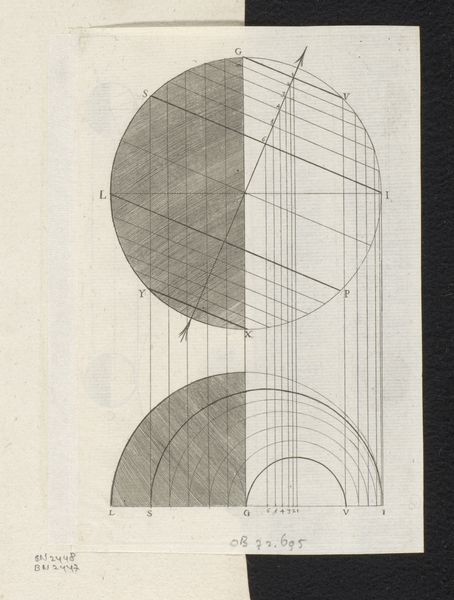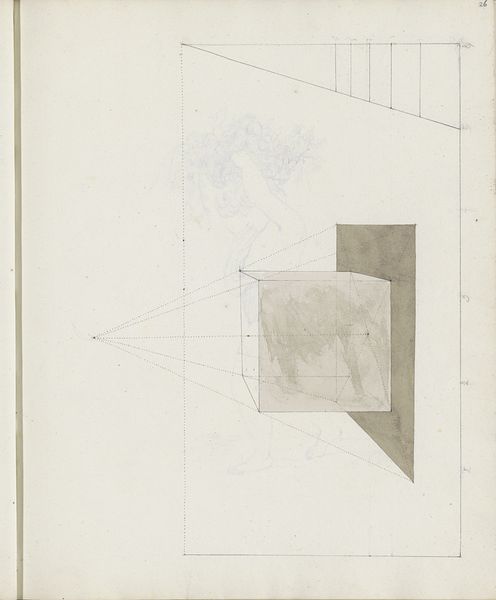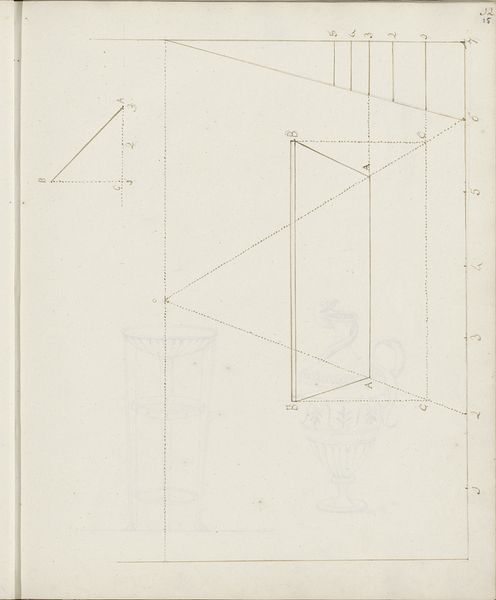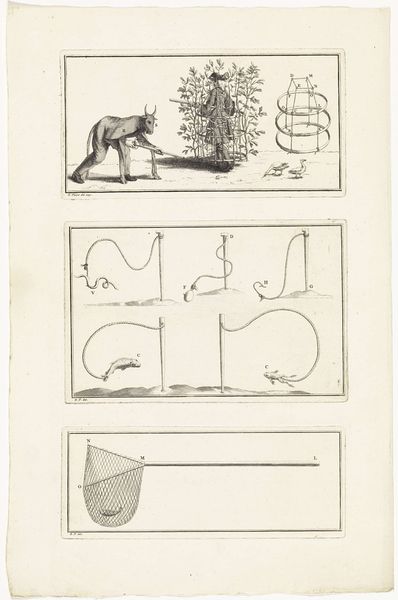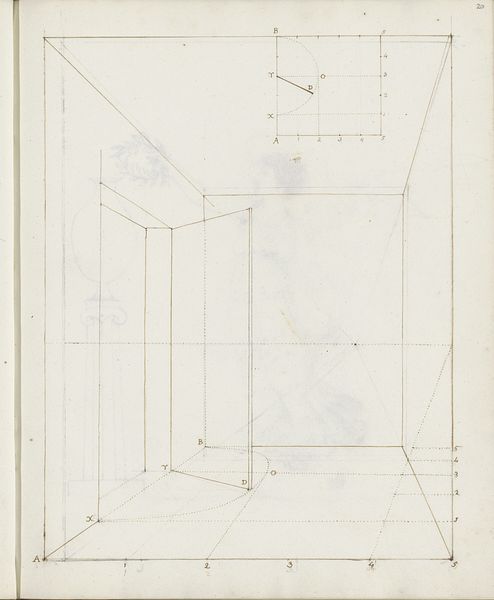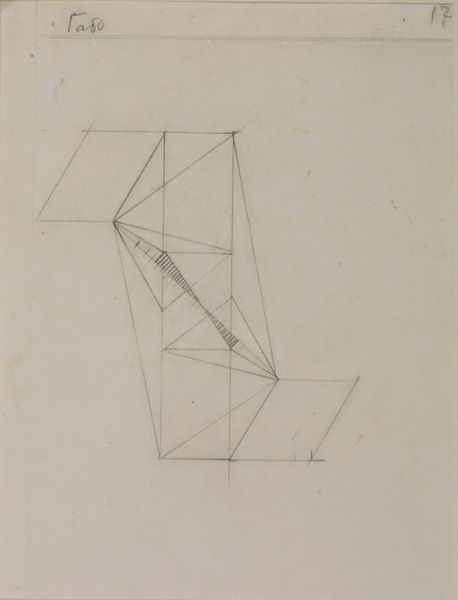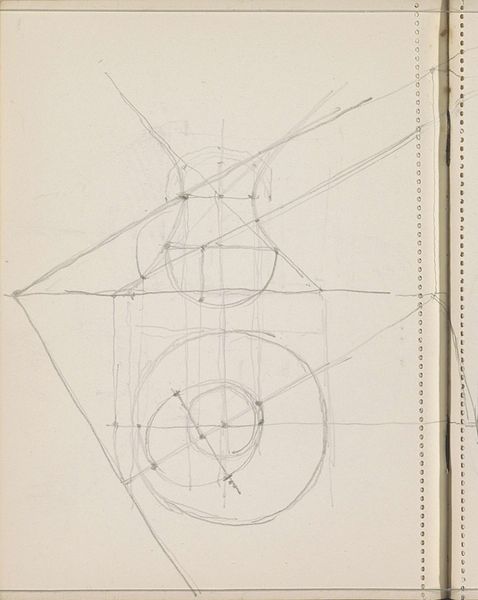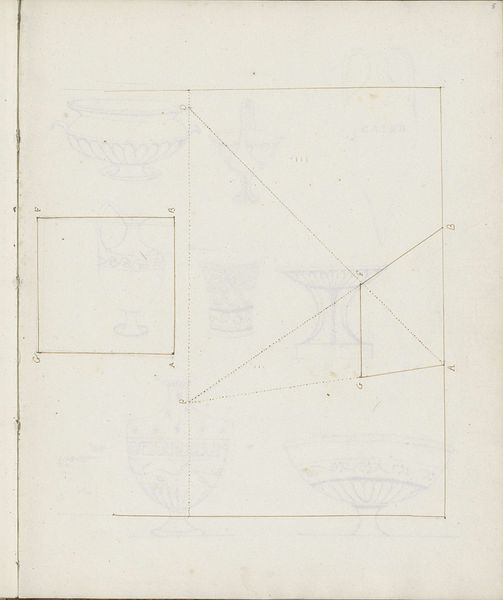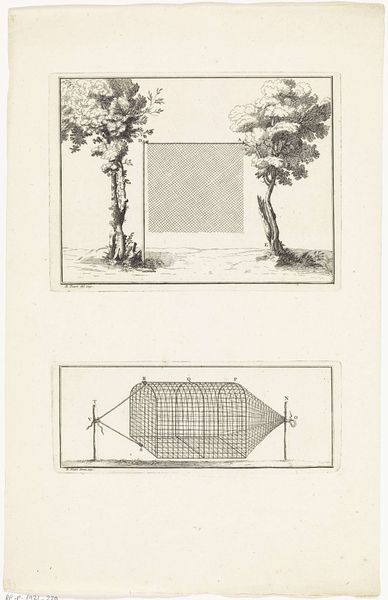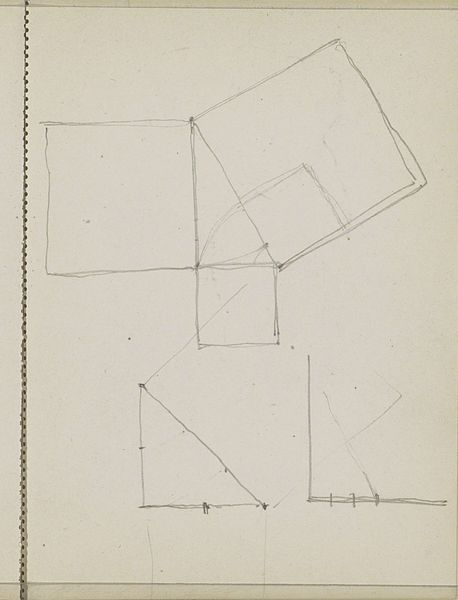
print, etching
#
baroque
# print
#
etching
#
etching
#
geometric
#
line
Dimensions: height 125 mm, width 188 mm, height 173 mm, width 184 mm, height 378 mm, width 251 mm
Copyright: Rijks Museum: Open Domain
Curator: Here we have "Nets for catching animals," an etching from 1730-1731 by Bernard Picart. The work resides here at the Rijksmuseum. What are your immediate impressions? Editor: Striking. Utilitarian yet abstract, the repetition of line and shape—the rectangles, circles and mesh—are laid bare. It is almost instructional. Curator: It is. This piece really emphasizes the way tools shape culture and are, in turn, shaped by it. Traps as cultural artifacts reveal much about the relationship between humans and animals at that time. Editor: Absolutely. Structurally, look at the linear precision, the meticulous articulation of each intersection within the netting. There's a stark contrast between the delicacy of the etched lines and the intended purpose of these devices, designed for capture. Curator: The visual language of the traps themselves reflects a broader shift in attitudes toward the natural world during the Baroque era. As hunting shifted towards scientific approaches, the technology becomes symbolic. What about the symbolism appeals to you here? Editor: I see it less in symbol and more in composition: the layering of planes, the overlapping of forms, create a dynamic visual field. How shapes and shadows contribute to depth on the paper is a feat. This wasn’t primarily intended as fine art. It's something technical. Curator: But there’s beauty here that surpasses the functional aspect. The tools also illustrate a form of dialogue between people and their world, don't you agree? Even now? These nets persist, even as hunting and gathering have changed over centuries. The tools still speak to a fundamental, unchanging, impulse within the culture. Editor: You have a good point. These linear exercises reveal something ineffable about technique and utility of craft, across cultures and histories. This technical drawing provokes thought beyond what is at first displayed. Curator: A surprisingly poignant convergence of intent and material—food for thought. Editor: Precisely. An efficient study.
Comments
No comments
Be the first to comment and join the conversation on the ultimate creative platform.
